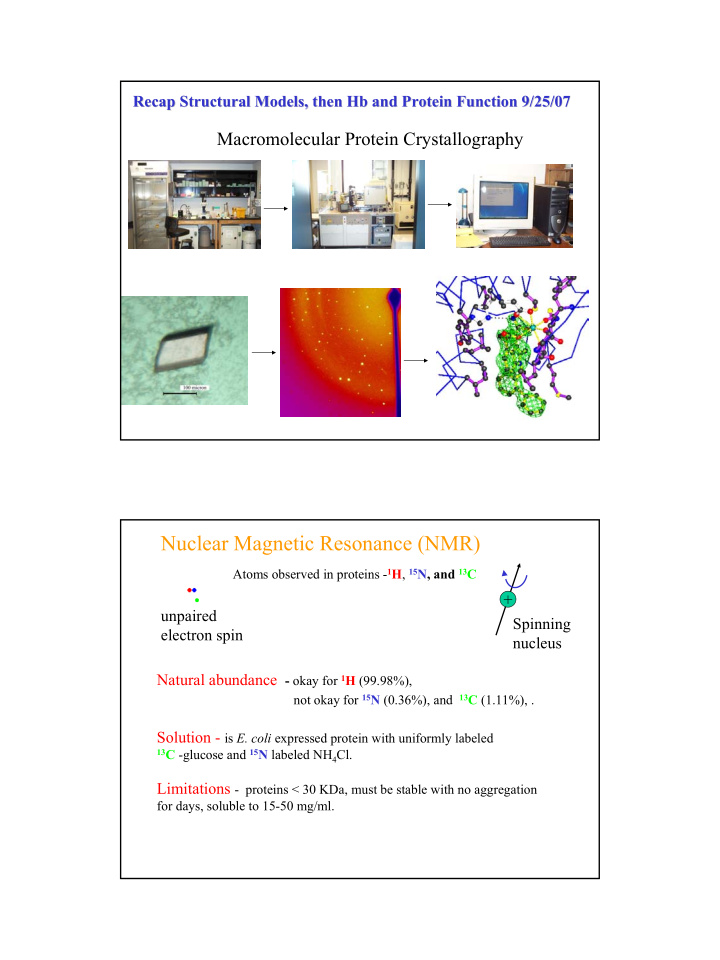



Recap Structural Models, then Hb Recap Structural Models, then Hb and Protein Function 9/25/07 and Protein Function 9/25/07 Macromolecular Protein Crystallography Nuclear Magnetic Resonance (NMR) Atoms observed in proteins - 1 H , 15 N, and 13 C + unpaired Spinning electron spin nucleus Natural abundance - okay for 1 H (99.98%), not okay for 15 N (0.36%), and 13 C (1.11%), . Solution - is E. coli expressed protein with uniformly labeled 13 C -glucose and 15 N labeled NH 4 Cl. Limitations - proteins < 30 KDa, must be stable with no aggregation for days, soluble to 15-50 mg/ml. 1
X- X -ray Crystal Structures of ray Crystal Structures of calmodulin calmodulin NMR Structures of closed form calmodulin 2
Bundle of 30 NMR models of calmodulin Cases of Bundle Spread • Missing restraints • dynamics NMR vs. Crystallography – advantage/disadvantages 1) Experimental difficulties need for homogeneity in common need good crystals for crystallography need 13 C and 15 N label for NMR size limits of technique 2) Reported structures look different – i.e. bundle Crystal vs. solution structure 3) Complementary information high resolution vs. dynamics positional amplitude, time domains certainty 3
Myoglobin – Mb 153 a.a. 17 kDa Hemoglobin – Hb monomer α 2 β 2 heterotetramer α 141 a.a. β 144 a.a. α vs. β 42% identical 62% similar Mb and Hb bind O 2 N N Fe2+ N N - O 2 C - CO 2 porphyrin heme group Go to chime demo to show oxygen binding pocket http://www.udel.edu/chem/bahnson/Chem641/chime/Index.htm http://www.whfreeman.com/lehninger/ 4
T-state to R-state Transition in Hb T-state in blue R-state in red O 2 binding shifts Go to chime demo to see movement: Helix F by only http://www.udel.edu/chem/bahnson/Chem641/chime/Hb.htm 0.4 Å to right http://www.whfreeman.com/lehninger/ T-state has stronger inter-subunit salt bridges Go to chime demo to see movement: http://www.whfreeman.com/lehninger/ 5
Saturation Curves for Hb and Mb and Hill Plot T4 R4 Symmetry Model of Cooperativity T-state: low affinity R-state: high affinity 2,3-BPG is an negative allosteric effector - O 2 C 2- OPO 3 2- OPO 3 2-3-bisphosphoglycerate Go to chime demo to see BPG binding in T-state http://www.udel.edu/chem/bahnson/Chem641/chime/Hb+BPG.htm http://www.whfreeman.com/lehninger/ 6
Recommend
More recommend